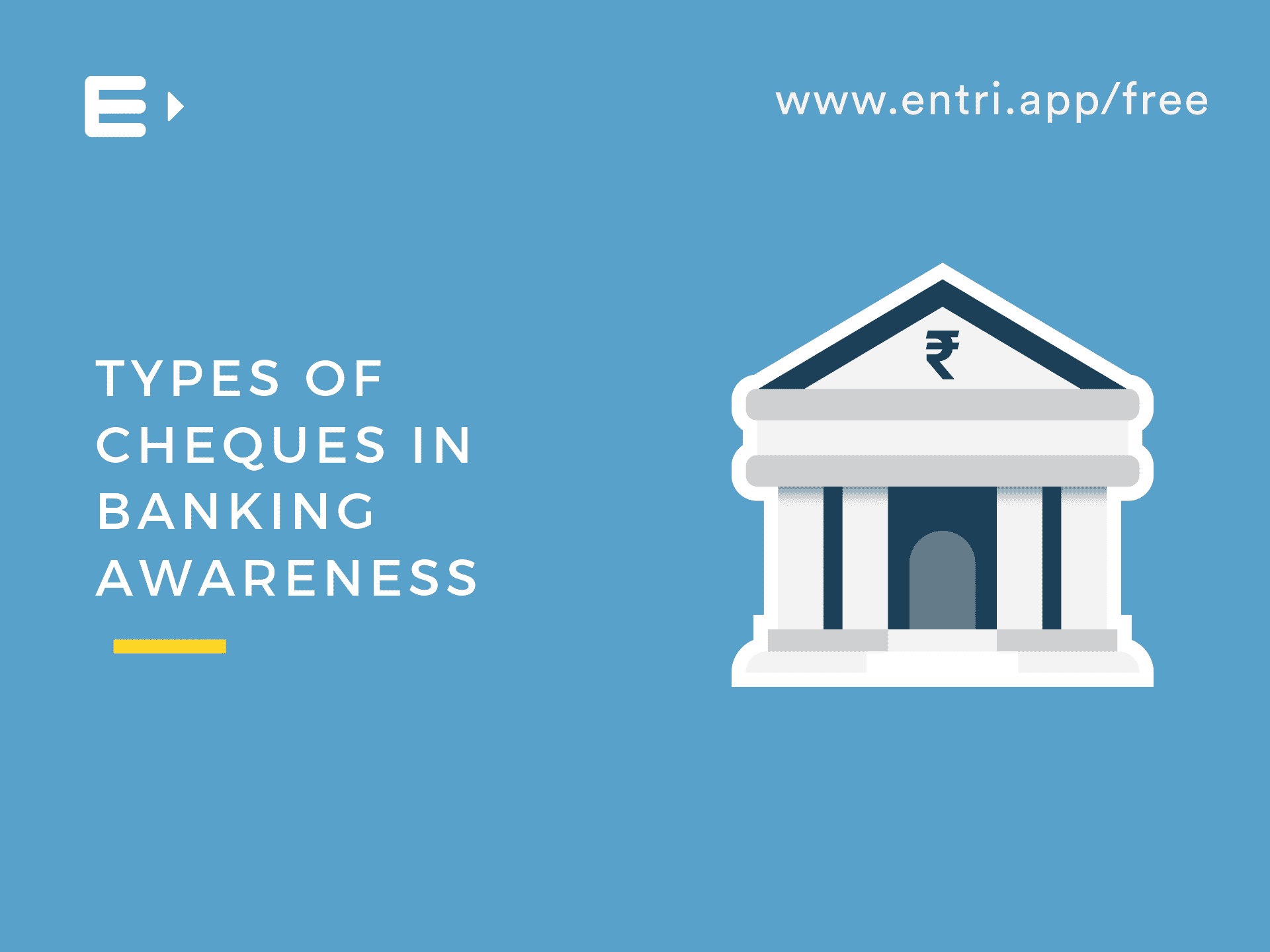In banking awareness, cheques are an important topic. After the advent of electronic modes of payment today in India, cheques are still very much in use given their flexibility for back-dated payments among other benefits. If you are preparing for any public sector banking examination such as IBPS PO 2019 or RBI Grade B 2019 or any other, your knowledge regarding banking must remain updated.
Hence, today we bring you this article to enrich your banking awareness knowledge by discussing the various types of cheques that exist and are used by people in India to transact every day.
For the record, the type of cheque depends on the purpose that both parties (payer and payee or drawer and drawee) seek to accomplish through it. Cheques are a viable alternative to the electronic systems or methods of payment as they do not require electricity to function and transactions by cheques can be easily traced which further adds to the convenience of the parties involved.
Hence, cheques in India are sure to stay in use and trend even if modern methods like UPI and NEFT have been introduced for payments. On that note, here are the different kinds of cheques with a short explanation about each one:
Bearer Cheques
Bearer cheques are those that can be encashed by anyone in possession of the cheque because nobody’s name is mentioned on it (for the payee). Bearer cheques are among the riskiest types of cheques because if a bearer cheque is lost, anyone can steal the money and be on their way.
Order Cheques
When a cheque’s ‘bearer’ part is struck off and a person’s name is mentioned in the ‘pay’ section, it becomes an order cheque as the drawer is literally ‘ordering’ the bank to pay the payee a certain sum of money. An order cheque can be encashed only by the individual who can provide a valid ID (such as Aadhar Card) to the bank to prove their identity before they are given any money from the bank.
Open Cheques
Open cheques refer to cheques wherein a person writes a cheque to himself to withdraw cash from a bank presumably from his own bank account, or he may do the same to deposit funds from his account to that of another person’s.
Crossed Cheques
Crossed cheques can be identified by the drawer drawing two parallel lines on the top left-hand corner of the cheque which implies that the cheque cannot be used to withdraw cash, and the money can only be deposited in the account of the payee. Crossed cheques can be endorsed to other individuals even if their names may not be on the cheque.
A/C Payee Cheques
Like the crossed cheques, the A/C payee cheques refer to the money being credited to the payee’s account directly, but unlike crossed cheques, A/C payee cheques cannot be endorsed to another person as a bill of exchange and the money has to be credited only to the payee’s account whose name is mentioned.
Post-Dated Cheques
If the drawer of a cheque mentions a date in the future for when the payee can encash that check or when the money is deposited into the payee’s account, the cheque is known as a post-dated cheque as it concerns a future date payment.
Ante-Dated Cheques
Ante-dated cheques are back-dated cheques wherein the withdrawal date is in the past, but the cheques are presented after that period.
Self Cheques
Quite simply, self cheques have (or include) the term ‘Self’ in the payee’s name field as you are paying yourself the money from your bank account.
Stale Cheques
If a cheque is not presented to the bank within 3 months after it has been issued, it no longer remains valid and hence is said to have turned ‘stale’.
BONUS: Drawee vs. Payee
The concepts of drawer and drawee might be somewhat confusing when it comes to the context or topic of cheques, so ensure to understand that a drawer is someone who draws or writes the cheque, while the drawee is someone who is required to pay the money to the payee. The drawee therefore for any cheque is always the bank as they are the ones tasked with the disbursal of the funds.
For a better shot at cracking your banking and government examinations, check out the Entri app!











